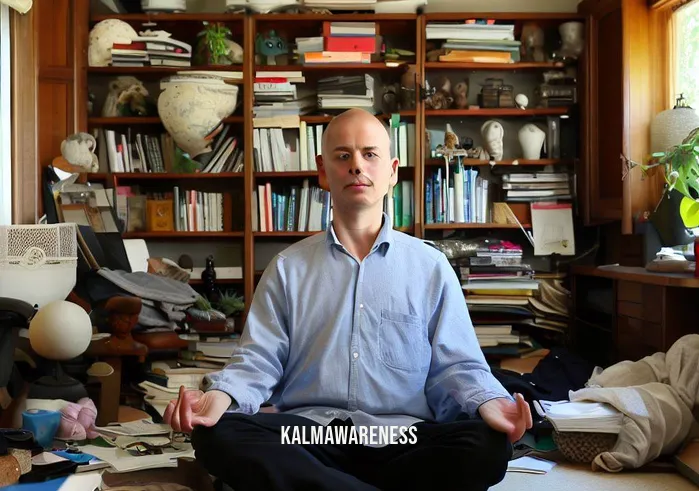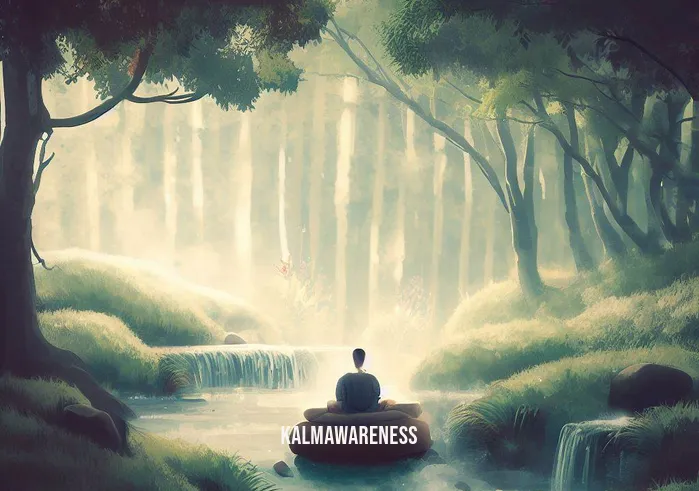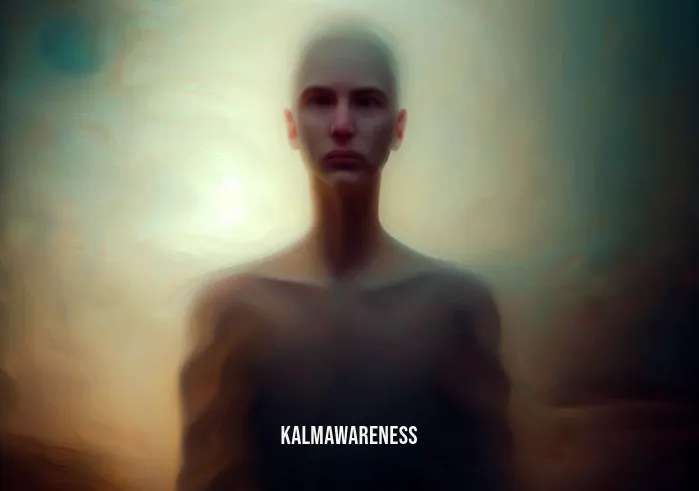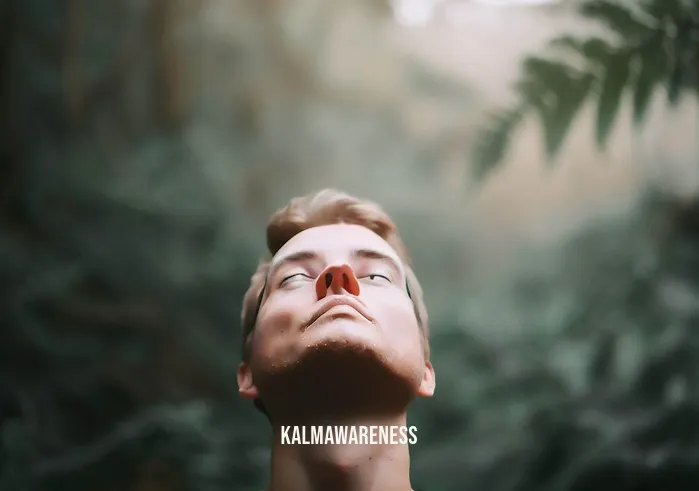Can You Lay Down to Meditate? The Power of Prone Meditation
Introduction: The Quest for Mindfulness and Relaxation
As we navigate the demands of modern life, the search for relaxation and mental equilibrium is becoming increasingly important. Traditional upright meditation methods have been an excellent source of mindfulness, but as our understanding of relaxation expands, alternative methods emerge. One question that’s been generating interest is: Can you lay down to meditate?
This question challenges the stereotypical image of meditation—usually an upright, cross-legged position that has its roots in ancient practices. In contrast, laying down to meditate has been somewhat of a grey area, often leading to debates among meditation enthusiasts and experts. In this article, we’ll explore the subject in depth, looking into factors like breathing, prone positioning, and the state of rest it induces.
Prone Position: A Potential Pathway to Mindfulness
The prone position, lying face down, has been generally considered less ideal for meditation because of the potential to drift off into sleep. However, this position can actually be a useful element of some meditation exercises, especially for individuals who find it difficult to sit for extended periods due to physical limitations or discomfort. If lying prone, you must keep in mind that maintaining a certain level of awareness is crucial to achieve a peaceful state of mind.
Reclining: Another Layer of Complexity
Lying on your back, or reclining, offers a middle ground between prone and seated positions. This posture is popular for certain specialized forms of meditation such as Mindful Hypnobirthing and EMDR Meditation. Here, the goal is often focused on deeper emotional or psychological work, making the reclined position a beneficial element.
The reclined position has its own set of rules for breathing and mindfulness. For instance, you may engage in mindful breathing exercises to stabilize your mind. Knowing how to spell stabilize your emotions in this posture can be an enlightening experience that combines comfort with depth.
Breathing and Meditation: The Core Connection
Regardless of your chosen posture—be it seated, prone, or reclining—breathing remains the element of some meditation exercises that ties everything together. When laying down, gravity has a different effect on your diaphragm and lungs, making your breaths potentially more shallow. A shallower breath may make it challenging to reach a deeper state of meditation quickly, but this is not necessarily a disadvantage. On the contrary, it can be an invitation to focus more intently on the breath, leading to how we get deep so fast in our meditation practice.
“If you want to conquer the anxiety of life, live in the moment, live in the breath.“
– Amit Ray
Continue Exploring
To summarize, can you lay down to meditate? The answer is a resounding yes, but it requires certain adaptations to your breathing and mindfulness practices to maintain the same level of awareness as traditional, upright methods. In this way, laying down to meditate may not just be an alternative but also an enriching expansion to your existing practice.
Eager to know more? In the next segment, we will delve deeper into the benefits of prone and reclining meditation positions, backed by scientific insights and expert opinions. This will include specialized techniques such as Rouse Yoga and their impact on a sustainable self-care routine. Continue reading to broaden your understanding of meditation’s versatile methods.

Beyond Traditional Boundaries: Why Laying Down Could Revolutionize Your Meditation Practice
The Stigma Around Prone and Reclining Meditation
Historically, laying down to meditate has sometimes been met with skepticism. Traditionalists argue that the prone or reclining positions are antithetical to the upright mindfulness achieved through sitting. However, what if lying down to meditate could offer its own unique set of advantages? What if it could be a part of sustainable self-care routines for those with specific needs or constraints?
The Science Behind Different Meditation Positions
Recent studies and expert opinions have started to shed light on the physiological aspects of different meditation postures. Whether you’re exploring mindful movement for sleep or engaging in Jack Kornfield’s meditation for beginners, the posture you choose has distinct implications. For instance, the prone position may have benefits for those with back pain, while the reclining posture may help those looking to do deep emotional work.
Key Factors When Laying Down to Meditate
Here’s a table summarizing some essential considerations when you decide to lie down for meditation.
| Factor | Prone Position | Reclining Position | Upright Position |
|---|---|---|---|
| Breathing | Deep belly breaths possible | Easier diaphragmatic breathing | Balanced breathing |
| Muscle Tension | Low | Moderate | High |
| Likelihood of Sleep | High | Moderate | Low |
| Mindfulness Level | Medium to High | High | High |
| Best For | Back pain, relaxation | Emotional work, relaxation | General mindfulness, focus |
A Guide to Laying Down Meditation Techniques
Incorporating laying down into your meditation regime can add layers of effectiveness, particularly if you’re mindful of the techniques you employ. Here are some methods specifically tailored to prone and reclining meditation:
- Teenagers Walking: Involves a guided walking meditation that transitions into lying down, helping younger individuals learn to relax and be mindful.
- Rouse Yoga: This yoga sequence involves transitioning from standing poses to reclining positions, providing dynamic flexibility in your meditation practice.
- 256 Hz Benefits: Incorporating sound frequencies like 256 Hz while lying down can help deepen your meditation and enhance relaxation.
- Meditation Made Simple: Simple meditation techniques that can be done in any position, including lying down, focusing on simplicity and ease.
List of Pros and Cons
Advantages of Lying Down to Meditate:
- Enhanced physical comfort
- Reduction of muscle tension
- Variety in practice
- Potential for deeper emotional work
Disadvantages:
- Risk of falling asleep
- Requires focused effort to maintain mindfulness
- Not ideal for extended periods of deep concentration
Conclusion: The Next Chapter in Your Meditation Journey
As we have seen, the question of whether one can meditate while laying down isn’t simply a matter of “yes” or “no.” It is a multifaceted question that encompasses physiological factors, individual preferences, and even age considerations. As our understanding of mindfulness evolves, it’s essential to break down stereotypes and explore new dimensions, like laying down to meditate, that can be integrated into your self-care routines.
As you consider integrating these techniques, remember that each day presents a new opportunity for mindfulness. In the next chapter, we will take you on a journey through the specific meditation techniques you can employ while lying down, from grounding exercises to emotional release work. So, continue reading to deepen your meditation practice and discover untapped pathways to peace and relaxation.

Hope on the Horizon: Can You Lay Down to Meditate and Find New Dimensions of Well-being?
The Power of Flexibility in Meditation
Hope and inspiration often find us in unexpected moments, and this is certainly true for meditation practices. By considering the question, “Can you lay down to meditate?” we open the doors to possibilities we might have otherwise ignored. It is this flexibility that makes us adaptable and resilient. EMDR meditation, for instance, often incorporates different postures, including lying down, to help individuals process traumas and emotions.
“Your value doesn’t decrease based on someone’s inability to see your worth.”
— Unknown
This quote embodies the beauty of inclusivity in meditation. Whether you are sitting, standing, or lying down, your practice is valid.
Embracing Your Journey with Lying Down Meditation
Within the scope of lying down to meditate, you can tap into new sources of hope and inspiration.
“Hope is being able to see that there is light despite all of the darkness.”
— Desmond Tutu
This form of meditation can be particularly helpful when involves attaining a peaceful state of mind in which thoughts are not occupied by worry. A relaxed state achieved while lying down can often be a more direct path to such peacefulness.
Elements That Bring Inspiration in Prone Meditation
- Affirmations: Repeating positive phrases can fortify your intention and motivation.
- Breathing Techniques: Synchronizing your breath can facilitate a judgement of the wise, bringing you wisdom in a relaxed state.
- Visualizations: Touch that body part and imagine healing energy flowing through you.
How Laying Down Meditation Is a Stepping Stone for Greater Things
“The journey of a thousand miles begins with one step.”
— Lao Tzu
Even a simple change in posture can dramatically influence your mindfulness journey. Lying down offers an accessible starting point for people who may find traditional postures uncomfortable or impractical. It is an ideal setup for those exploring how to spell stabilize their mind and body through meditation. And perhaps more than anything, it is an invitation to deepen your practice, a stepping stone to greater self-understanding and peace.
Quotes That Resonate with Lying Down Meditation
- “The quieter you become, the more you can hear.” — Ram Dass
- “Find a comfortable seat on the inside.” — Anonymous
- “Lie down and listen to your mind, it might reveal unheard secrets of your soul.” — Anonymous
These quotes speak to the potency and individuality of each person’s meditation journey, reminding us that lying down can be both a comfort and a pathway to a deeper self.
Looking Ahead: Embark on Techniques
The contemplation surrounding whether you can lay down to meditate isn’t just an exploration of postures but an opening to a new realm of mindfulness and well-being. As you take these ideas to heart, you might find inspiration bubbling up in places you least expect it, proving once again that the scope of meditation is as vast as the mind is limitless.
In the next chapter, we will delve into specific techniques that are optimized for lying down meditation. We will look at how you can deepen your practice, from grounding techniques to targeted breathing exercises. So, continue reading and let the inspiration flow.

Dissecting the Benefits: How Lying Down Enriches Your Meditation Practice
Getting to the Core of Lying Down Meditation
By this point, we’ve explored how the question, “Can you lay down to meditate?” has a transformative power that extends beyond posture. It introduces us to varied perspectives and techniques, even bringing a glimmer of hope and inspiration into our meditation practice. One of the lesser-discussed aspects is how laying down to meditate can be beneficial in sustainable self-care.
“You have to take care of yourself before you can take care of others.”
— Anonymous
This philosophy rings true here, as well. Let’s delve into the nuances to truly understand why lying down may offer unique advantages.
Advantages of Lying Down to Meditate
Understanding the benefits is crucial to making an informed choice in your practice. Here, we’ll break down these benefits:
Physical Comfort
- Reduced Stress on Joints: Especially beneficial for those who have arthritis or muscle pain.
- Optimal Blood Circulation: When you lie down, your heart doesn’t have to work as hard to circulate blood.
Psychological Comfort
- Ease into Meditation: For beginners, lying down can make it easier to enter a meditative state.
- Reduced Anxiety: The posture itself is naturally relaxing, thereby reducing stress and anxiety.
Enhanced Focus
- Elimination of Physical Distractions: No need to worry about aching muscles or joints, allowing for improved focus.
- Deepened Breathing: Lying down naturally encourages diaphragmatic breathing, leading to a 256 Hz benefits-like effect on your well-being.
Versatility
- Different Settings: Whether you’re trying to fit in a 15-minute power nap or longer sessions, lying down is versatile.
- Suitable for Various Techniques: From mindful hypnobirthing to guided visualization, this posture is widely applicable.
Considerations and Best Practices
While lying down to meditate has its merits, it’s not a one-size-fits-all solution. Here’s what to consider:
- Avoiding Sleep: Lying down can make some people too relaxed, leading to unintended sleep.
- Posture: Ensure that your body is aligned to prevent any physical discomfort or injury over time.
Tips for Best Practices
- Mindful Selection of Location: Choose a place where you won’t be disturbed.
- Use of Aids: Employ cushions or yoga blocks to keep your body aligned.
- Orientation: Consider your orientation in the room. Some prefer facing east for its symbolic significance in spirituality.
The Impact on Different Age Groups
In the teenage years, meditation can provide crucial benefits, ranging from stress relief to enhanced focus. Teenagers walking through the labyrinth of adolescence could find lying down meditation a less intimidating entry point.
“The young do not know enough to be prudent, and therefore they attempt the impossible—and achieve it, generation after generation.”
— Pearl S. Buck
Whether you’re a teenager or an adult, lying down to meditate can be tailored to suit your needs, offering a versatile approach to mindfulness.
What’s Next: The Finishing Touches
As we’ve discovered, the question of whether you can lay down to meditate unfolds a tapestry of benefits, considerations, and techniques that make this form of meditation a valuable asset for any practitioner.
In the final chapter, we will bring everything full circle. From discussing Jack Kornfield’s insights for beginners to elaborating on how meditation can be made simple, we will conclude by offering actionable tips that will help you make the most out of your lying down meditation practice. Continue reading to bring this enlightening journey to a fulfilling end.

A Reclined Farewell: Reflecting on the Journey of Lying Down to Meditate
A Gentle Unfolding
The intriguing query—Can you lay down to meditate?—has been our compass through an enlightening journey. As we’ve discovered, meditation in a prone position transcends mere physical posture. It melds relaxation, mindfulness, and mental stability into a singular act of personal growth. From its physical and psychological benefits to its impact on different age groups, lying down to meditate is indeed a versatile and inclusive practice that caters to diverse needs.
“To understand the immeasurable, the mind must be extraordinarily quiet, still.”
— Jiddu Krishnamurti
This stillness, this moment of complete tranquility, is what makes reclining meditation a haven for those seeking a peaceful state of mind where thoughts are not occupied by worry.
It’s Not About the Destination; It’s About the Journey
This adage couldn’t be more apt for our exploration. Each chapter offered something unique: practical considerations, psychological insights, and the judgement of the wise to help us approach lying down to meditate with informed enthusiasm. Our journey has shown us that reclining, being at rest, or lying down for meditation has as much depth and potential as any other traditional position.
The Light-Hearted Wisdom of Reclining Mindfulness
So here we are, at the end of our journey, yet standing at the threshold of endless possibilities. Each one of us is a daydreamer, a thinker, and often caught up in the hustle of life, forgetting to keep in mind the essence of being present. We’ve learned that reclining to meditate can serve as an enriching tool to usher us back into the present moment, whether we are aiming for a quick 15-minute power nap or more sustained mindfulness.
Your Next Steps
- Revisit Past Insights: For those who’d like a refresher, consider revisiting earlier chapters. The layers of information are rich and may offer new perspectives upon a second read.
- Explore More: Your journey doesn’t have to stop here. We offer an array of other enlightening content such as the ins and outs of EMDR meditation and ways to spell ‘stabilize’ in your life.
- Share Your Experience: Join our community and share how lying down to meditate has impacted you.
A Warm Thank You
We hope you found your answers and more importantly, questions you didn’t know you had. A heartfelt thank you for being a part of this exploration. The world of mindfulness and relaxation is as wide as the sky and as deep as the ocean; there is always something more to discover, to embrace, and to enjoy.
“Do not dwell in the past, do not dream of the future, concentrate the mind on the present moment.”
— Buddha
This exploration is a testament to that philosophy. And the one for each blessed day ahead is a new opportunity to rediscover the power of now—whether sitting, walking, or lying down to meditate.
Continue to enrich your life through our articles and insights; we promise a constant flow of engaging and enlightening content in our future editions.
Farewell, until we meet again on another page, under another query, but always in the quest for deeper awareness and understanding. 🙏





